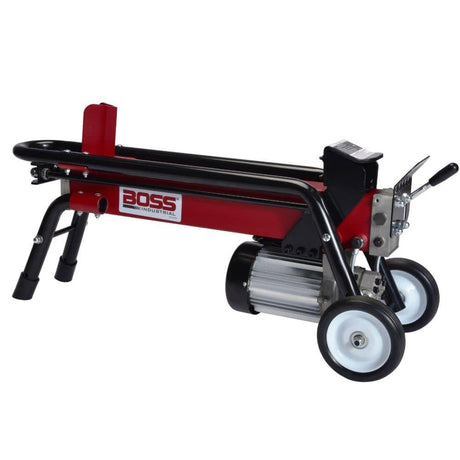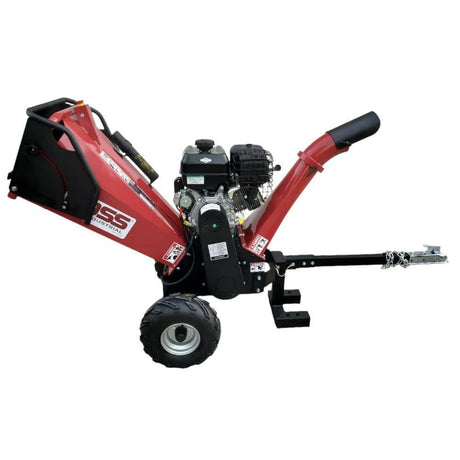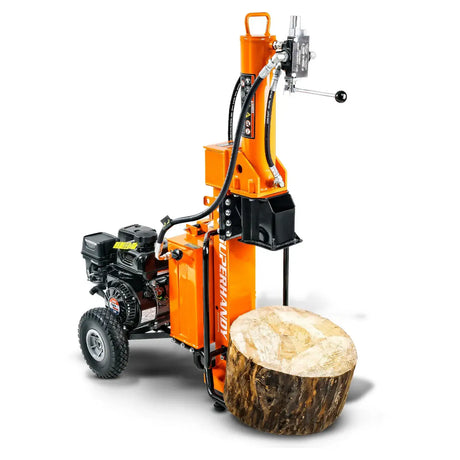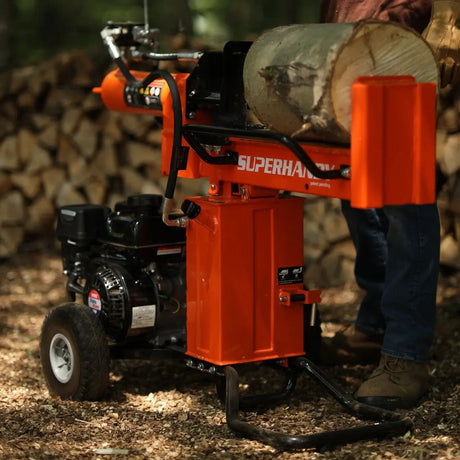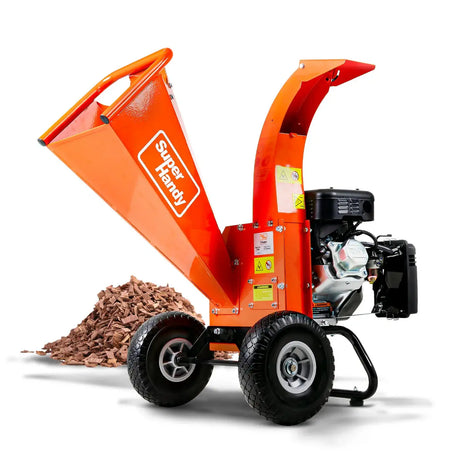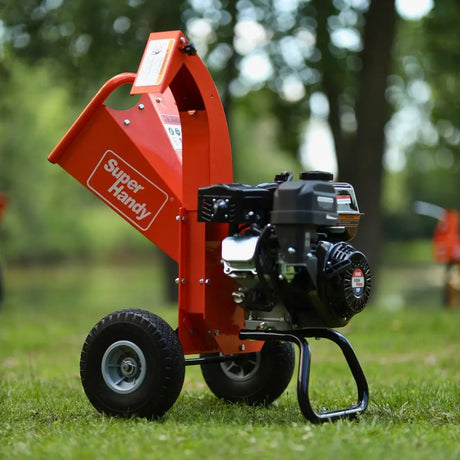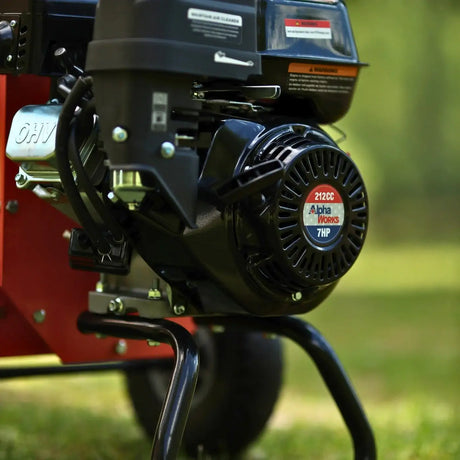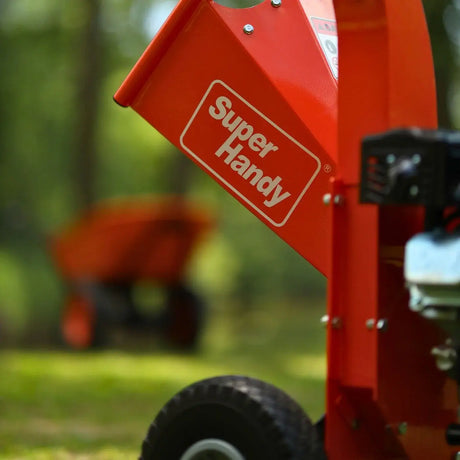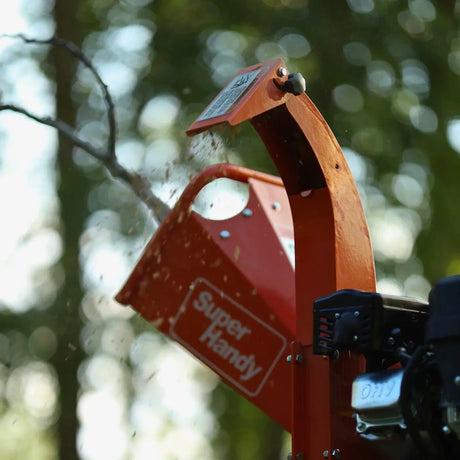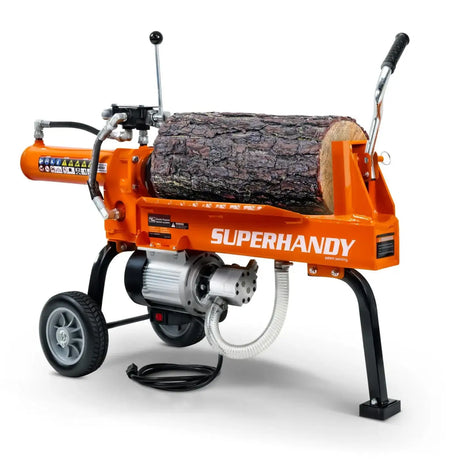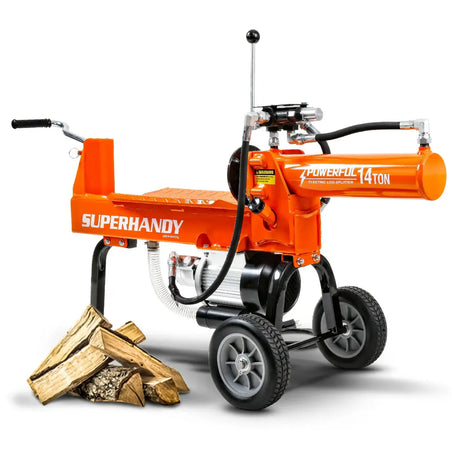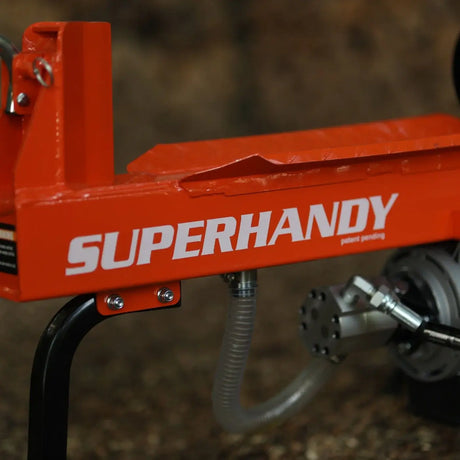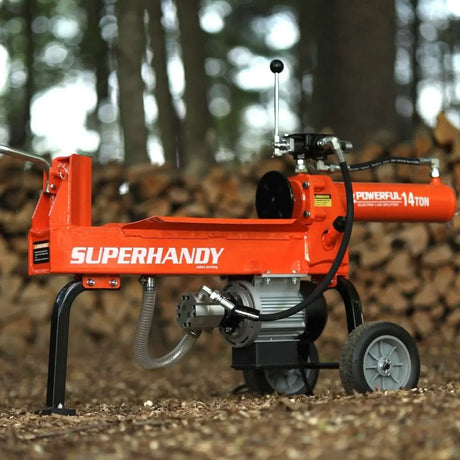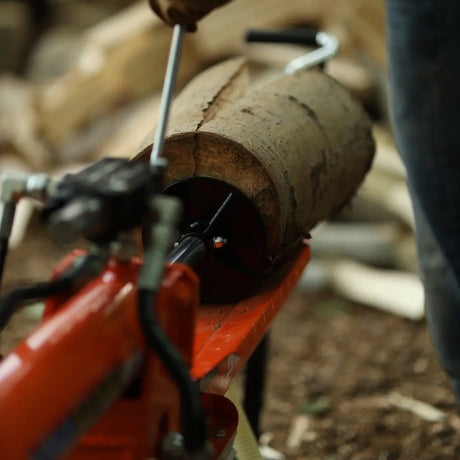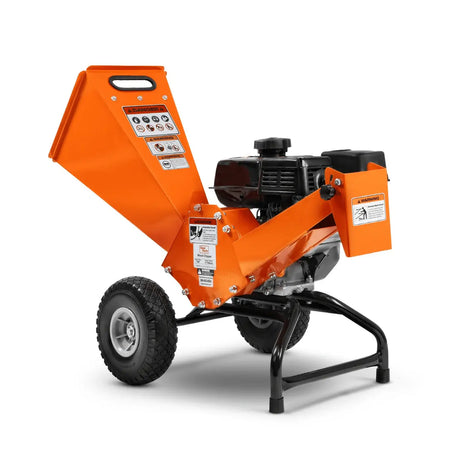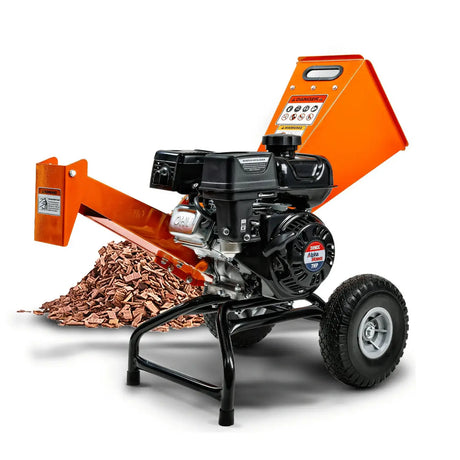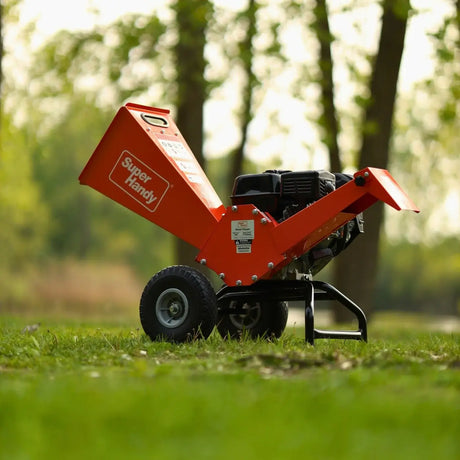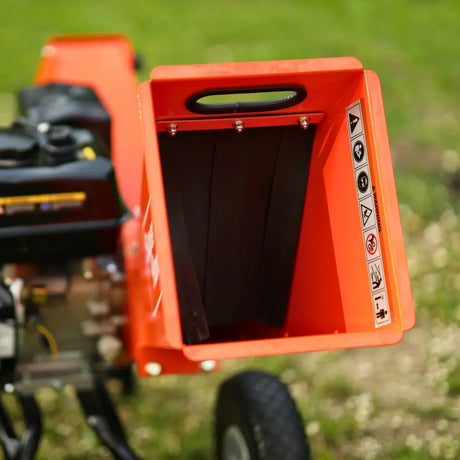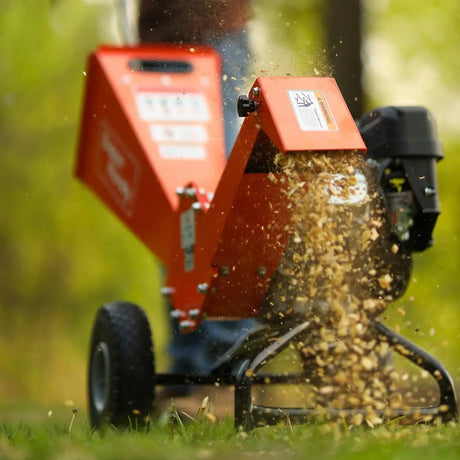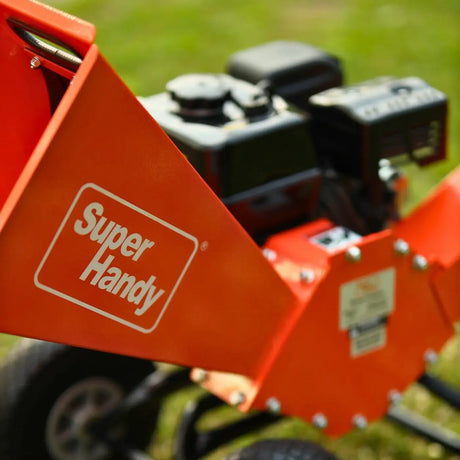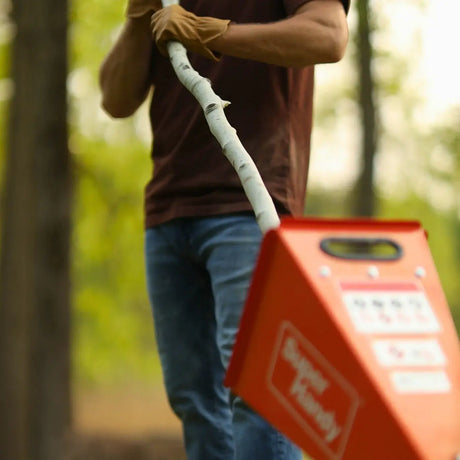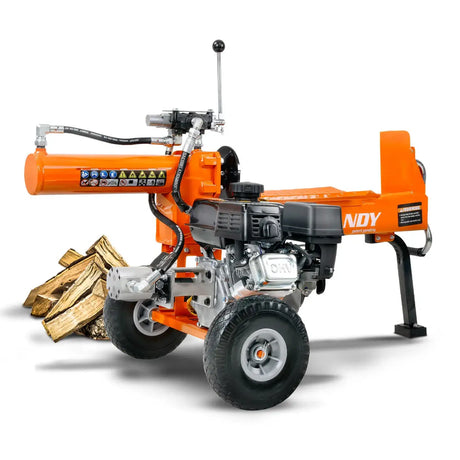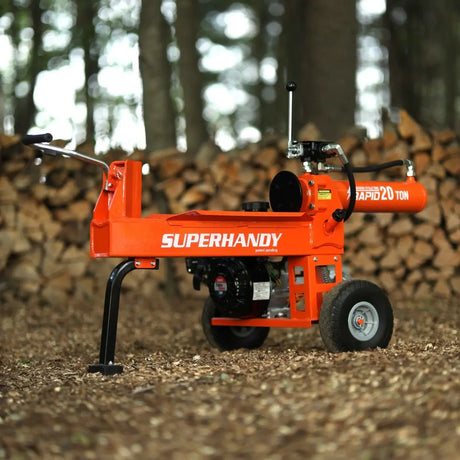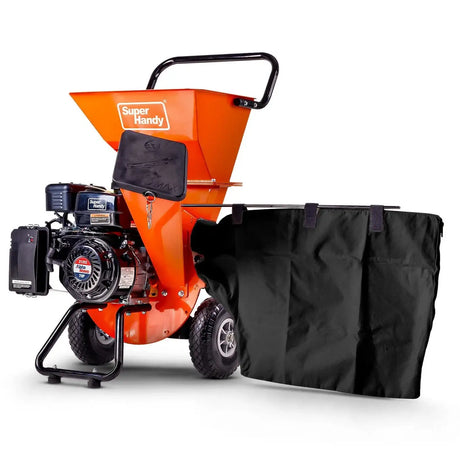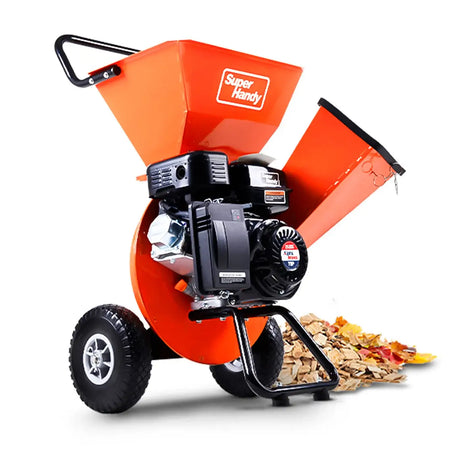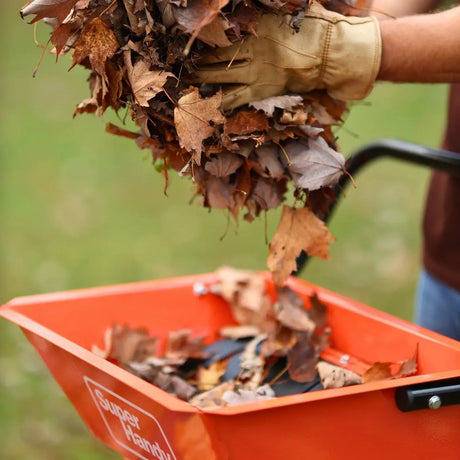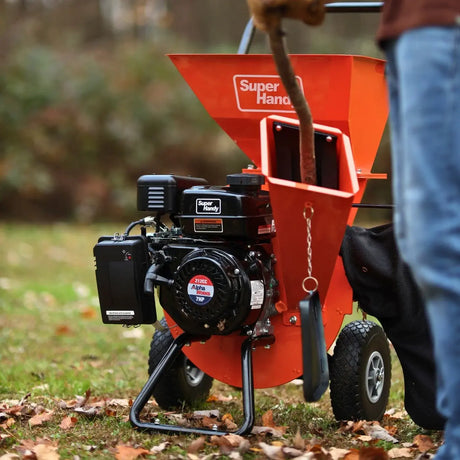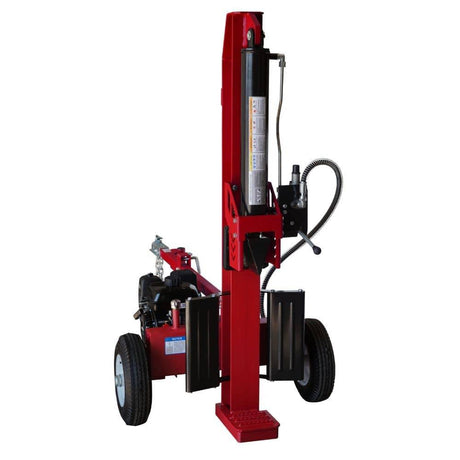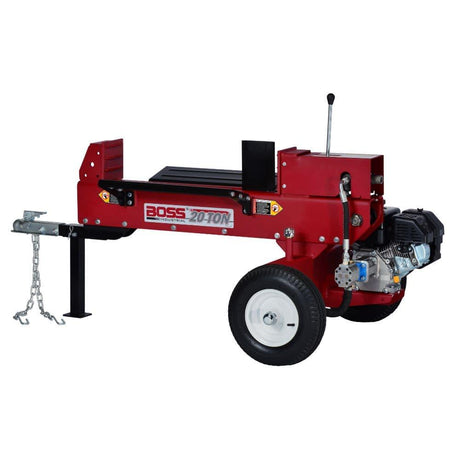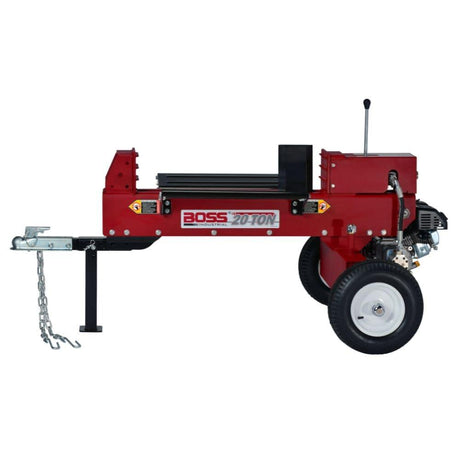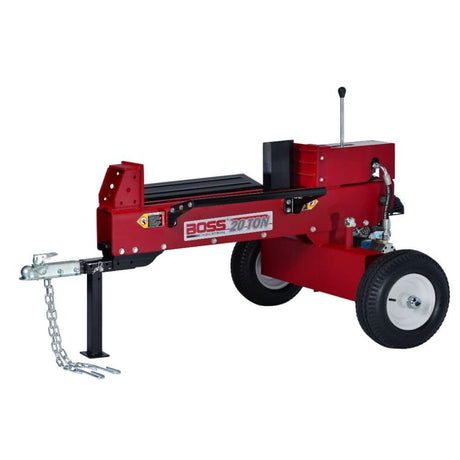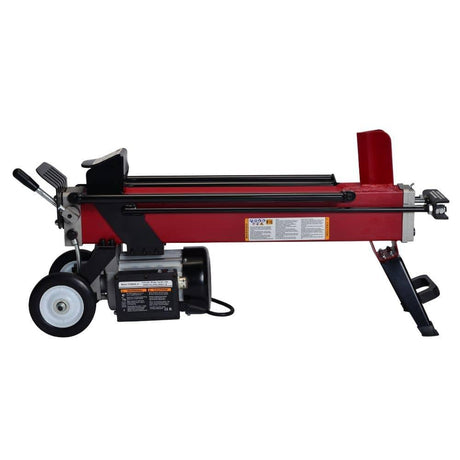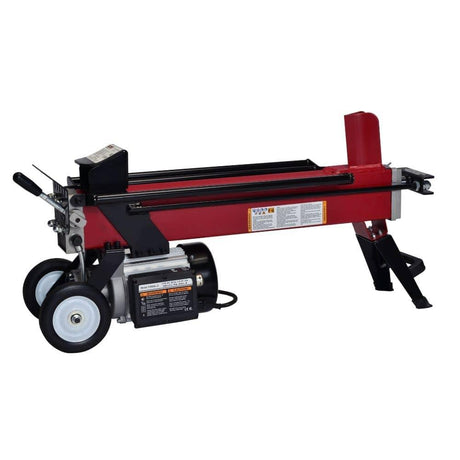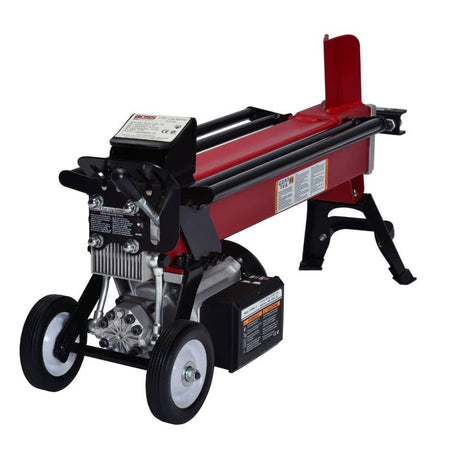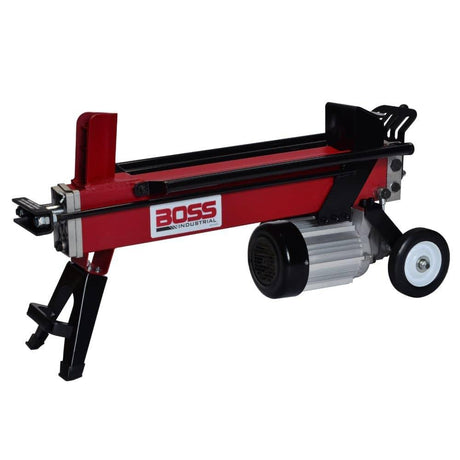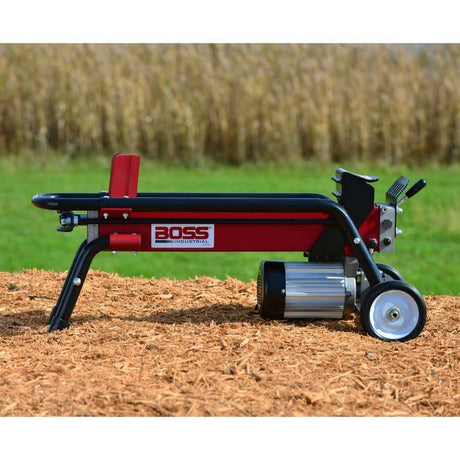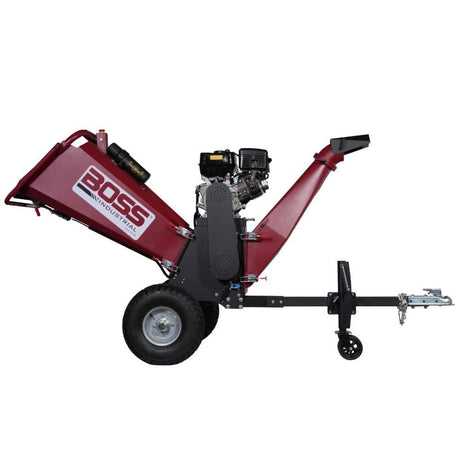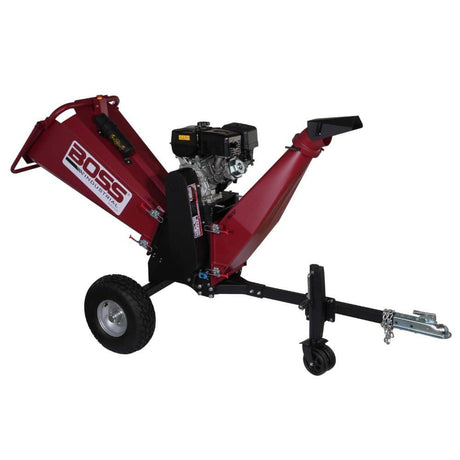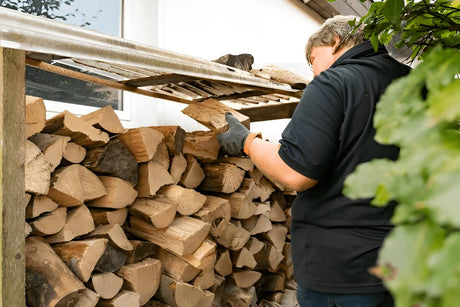Introduction: Understanding the Vertical vs Horizontal Debate
Why This Comparison Matters for Firewood Users
If you've ever split more than a few cords of wood, you already know-how you split matters almost as much as what you split. Choosing between a vertical and horizontal log splitter isn't just about style. It directly affects your back, your time, and your overall productivity.
For a deeper dive into specs, performance charts, and side-by-side comparisons, check out our Horizontal vs Vertical Log Splitters: Full Comparison Guide with Charts.
Whether you're clearing up storm-felled trees or prepping firewood for winter, the right log splitter mode can save you hours-and a whole lot of heavy lifting. This comparison matters because both styles are built for different types of logs, users, and working environments.
Some folks need the brute practicality of vertical position. Others prefer the speed and rhythm of horizontal setups. Knowing the difference helps you avoid frustration-and possibly injury-down the line.
If you are unsure what size log splitter and tonnage you need, check out our comprehensive guide to choosing the right splitter size.
Key Differences at a Glance (Design, Use Cases, Efficiency)
Here's a quick snapshot before we dive deeper:
Design Orientation
- Horizontal splitters lay the log on a beam and push the splitting wedge horizontally.
- Vertical splitters allow you to roll large logs into place and split them from top down.
Ease of Use
- Horizontal splitters: Easier for smaller logs. Requires lifting.
- Vertical splitters: Easier for heavy rounds. No lifting needed-just roll the log in.
Efficiency & Speed
- Horizontal splitters: Great for batching and speed if you've got uniform logs.
- Vertical splitters: Slower cycle time but handles big, awkward, or green wood better.
Typical Users
- Horizontal : Homeowners, suburban users, small-volume splitting.
- Vertical: Rural, off-grid, or firewood sellers dealing with tough, oversized logs.
In short, this isn't a one-size-fits-all choice-it's about matching the wood splitter to your workflow.
Let's break each one down so you can pick the right wood splitter for your stack.
For a detailed comparison chart, check our horizontal vs vertical full comparison guide for side-by-side specs.
| Feature | Horizontal Splitter | Vertical Splitter | Dual-Mode Splitter |
|---|---|---|---|
| Ideal Log Size | Small to medium (< 18") | Large/oversized (20"+) | Both |
| Ease of Use | Requires lifting | Roll logs in, no lifting | Best of both |
| Efficiency | Fast for batching | Slower but handles tough logs | Adaptable |
| Best For | Homeowners, suburban use | Rural users, large rounds | Mixed use, flexibility |
| Portability | Lightweight, compact | Bulkier, heavy-duty | Heavier but versatile |
| Starting Price | $300–$3,000+ | $1,000+ | $1,200–$4,000+ |
| Power Source | Electric or gas | Usually gas | Mostly gas |
| Back-Friendly? | For smaller logs | For large, heavy logs | Best option depending on log size |
What Is a Horizontal Log Splitter?
How It Works and What It's Best For
A horizontal log splitter lays the log flat on a beam. The ram pushes the log into a stationary splitting wedge-or vice versa-and splits it along the grain. It's a simple setup that works well for small to medium-sized logs.
Most horizontal log splitters are used at waist height, so you'll need to lift each log into position. That's no issue with smaller pieces, but it can get tiring if you're processing large rounds all day.
Best for:
- Pre-cut logs
- Uniform, seasoned firewood
- Homeowners with light to moderate wood needs
If your firewood is already cut and dried, this setup keeps the process fast and clean.
Pros and Cons of Horizontal Log Splitters
Pros:
- Great for batching logs-fast and efficient
- Ideal for use on stands, benches, or carts
- Compact and easy to store
- Works well with electric or gas power
Cons:
- Requires lifting every log onto the beam
- Not ideal for large, heavy, or oddly-shaped logs
- Less forgiving if your wood is green, knotted, or stringy
If you're splitting in bulk and have help loading, horizontal is a strong choice. If you're working solo with oversized logs, it can wear you out.
Best Use Case Scenarios: Light to Medium Logs
Horizontal log splitters shine when:
- You're splitting 12"-20" seasoned logs
- You want a machine that's easy to wheel out, plug in, and go
- You split mostly softwood (pine, spruce, fir) or dry hardwoods (oak, ash)
- You're in a suburban or residential setting
Whether it's prepping for weekend fires or building your winter stack, a horizontal log splitter gets the job done-as long as you're not wrestling monster rounds.
| User Type | Ideal Splitter Type | Key Reason |
|---|---|---|
| Casual User | Horizontal Electric | Affordable, low effort, clean |
| Weekend Warrior | Horizontal Gas | Faster cycle time, portable |
| Elderly / Injury Concerned | Vertical or Dual-Mode | No lifting, more control |
| Firewood Seller | Dual-Mode High-Tonnage | Handles any log, efficiency + versatility |
| Off-Grid / Homestead | Vertical Gas | Power, no electricity needed |
What Is a Vertical Log Splitter?
How It Works and What It's Best For
A vertical log splitter allows you to roll or tilt large logs into place without lifting. The log stays upright, and the hydraulic ram pushes down from above, splitting the wood vertically. This setup is a back-saver for anyone working with oversized or water-logged rounds.
It's especially helpful when you're dealing with:
- Very heavy logs you can't lift onto a horizontal beam
- Large-diameter or irregular logs
- Green wood that needs more splitting force to split
Vertical wood splitters are commonly found on larger gas-powered units, often with the ability to switch between vertical and horizontal modes.
Pros and Cons of Vertical Log Splitters
Pros:
- No heavy lifting-just roll logs into position
- Handles large, knotty, or fresh-cut rounds with ease
- Ideal for working solo in tough conditions
- Often built into heavy-duty, high-tonnage wood splitters
Cons:
- Less efficient for splitting smaller logs or batching
- Awkward working position-requires bending over
- Not available on most electric log splitters
- Can be slower if constantly adjusting log placement
If you're tackling big logs by yourself, this is the safer and smarter option. Just be ready for more hands-on handling.

Best Use Case Scenarios: Large, Heavy, or Green Logs
Vertical log splitters come into their own when:
- You're working off-grid or in a rural setting
- Your woodpile includes 20"+ rounds or storm-downed trees
- You're splitting green hardwoods like elm, hickory, or oak
- You don't have a second set of hands to help with lifting
It's not the fastest setup-but for the biggest, nastiest logs? It's the one that gets the job done without throwing out your back.
Horizontal vs Vertical Log Splitter: Head-to-Head Comparison
| Use Case | Best Splitter Type | Why It’s Best |
|---|---|---|
| Backyard fire pits, light use | Horizontal Electric | Clean, compact, no lifting for small logs |
| Heating full home off-grid | Vertical or Dual-Mode Gas | Handles oversized, green, or heavy rounds with no lifting |
| Mixed log sizes (urban + rural) | Dual-Mode Gas | Switch modes depending on the log you're splitting |
| Older users or bad back | Vertical or Dual-Mode | Avoid lifting; roll logs into place |
| Firewood sales / high volume | Vertical High-Tonnage | Built for big rounds and green hardwoods |
| Budget-conscious beginner | Horizontal Electric | Low-cost entry point, works for small jobs |
Ergonomics and Ease of Use
Horizontal Wood Splitters: Great for splitting small to medium logs repeatedly. You stay upright, and most models have waist-height tables. It's efficient if you're batching firewood and want to avoid constant bending.
Vertical Wood Splitters: Better for large, heavy logs-no lifting required. Just roll them into place. But the tradeoff is you're working closer to the ground, which can get tiring if you're doing dozens of logs.
Bottom Line:
- Go horizontal if you're splitting manageable logs regularly.
- Choose vertical if you want to save your back on oversized rounds.
Splitting Power and Efficiency
Horizontal: Comes in a wide range of tonnages, from light electric units to heavy-duty gas models. Great for repetitive splitting when the log size is consistent.
Vertical: Almost always gas-powered and built for high tonnage. Better suited for dense hardwoods or green wood that takes serious force to split.
| Feature | Horizontal Splitter | Vertical Splitter |
|---|---|---|
| Average Tonnage | 7–27 tons (wide range) | Usually 20+ tons |
| Cycle Speed | Faster for small logs | Slower due to log repositioning |
| Knotty/Green Wood | Can struggle | Handles better with high force |
| Power Source | Electric or Gas | Gas only (usually) |
Bottom Line: Both offer serious power-but vertical wins when it comes to brute strength and dealing with tough, knotted logs.
Log Size Handling and Versatility
Horizontal: Best for logs under 20 inches in diameter. You'll need to lift each one onto the beam, which limits what you can handle solo.
Vertical: Lets you tackle 20-30+ inch rounds by simply rolling them into place. Ideal for awkward shapes and oversize cuts.
Bottom Line:
- Horizontal for uniform-sized, dry firewood.
- Vertical if you're clearing large, uneven, or green logs from your property.
Portability and Storage
Horizontal: Compact models are easier to store, especially electric log splitters. Many come with wheels or tow kits.
Vertical: Tends to be bulkier and heavier-but most vertical-capable units are convertible, so you can move them in horizontal mode, then switch as needed.
| Feature | Horizontal | Vertical | Dual-Mode |
|---|---|---|---|
| Storage Space | Compact | Bulky | Larger footprint |
| Weight | Light to medium | Heavy | Heavy |
| Mobility | Easy to move | Harder to move | Moves in horizontal mode |
| Ideal Setting | Urban/Suburban | Rural/Outdoor | Mixed settings |
Bottom Line:
- Horizontal design are more convenient for urban/suburban settings.
- Vertical models need more space but are trailer-ready for remote work.
Cost Considerations: Does One Save You More?
Horizontal Only Models: Available across the full price range-from $300 electric units to $3,000+ gas monsters.
Vertical/Convertible Models: Typically start at mid-range pricing ($1,000+). They're often more expensive due to higher tonnage and dual-mode design.
| Price Range | Splitter Type | Key Features |
|---|---|---|
| $300–$700 | Horizontal Electric | Light-duty, great for small logs, plug-and-play |
| $700–$1,500 | Mid-range Horizontal | More power, possibly gas-powered, better speed |
| $1,000–$2,500 | Vertical or Dual-Mode | Heavy-duty gas, can handle large logs |
| $2,500+ | Commercial Dual-Mode | High-tonnage, trailer-ready, built for volume and flexibility |
Bottom Line:
- If budget is tight and you're only doing backyard work, horizontal is the value play.
- For long-term use on big wood, vertical log splitters are worth the upfront cost.
Want to learn more about splitter prices? Check out our complete log splitter price guide.
To see how gas and electric options compare, take a look at our electric vs gas full comparison guide for more insights.
If you’re still weighing buy vs rent, check out our owning vs renting cost value breakdown to see which makes more sense.
What About Dual-Mode Splitters?
Benefits of Vertical/Horizontal Combo Models
If you want the best of both worlds, dual-mode log splitters-also called convertible or dual-position models-let you switch between horizontal and vertical in seconds. This is a game-changer when your firewood pile includes a mix of easy splits and monster rounds.
Here's why they're popular:
- Flexibility: Split smaller logs in horizontal mode for speed and ergonomics. Flip to vertical when you're dealing with heavy rounds you can't lift.
- No extra tools required: Most models switch modes with a simple pin or latch system.
- More value per dollar: Instead of buying two machines (or wishing you had), a dual-mode log log splitter adapts to the job at hand.
"I use horizontal for everything under 18 inches. But when I hit a gnarly oak stump, I drop it into vertical and just roll the log in." - A real-world approach from seasoned users
When to Consider a Dual-Position Log Splitter
A combo unit is worth considering if:
- You deal with mixed log sizes-especially if you're clearing fallen trees or buying unsorted firewood.
- You want one machine for multiple tasks, whether it's weekend splitting or seasonal batches.
- You're working alone and need a way to split oversized logs without lifting.
They're especially useful for:
- Rural properties with a steady firewood supply
- Landscapers and firewood sellers who handle large volumes
- Homeowners with varied tree types (oak, maple, pine, etc.)
Bottom line: If you want true versatility without compromise, a dual-mode wood splitter covers more ground and saves your back-literally.
Which Log Splitter Is Best for You?
For Homeowners with Small to Medium Logs
If your firewood pile mostly comes from backyard trees or firewood deliveries, and you're dealing with logs under 16" in diameter, a horizontal electric log splitter or light-duty gas unit is all you need.
- Electric log splitters (7-14 tons) are quiet, clean, and plug into a standard outlet.
- Gas models (10-16 tons) give you more power and outdoor flexibility if you don't want to be tethered to a cord.
💡 Stick with horizontal if you're splitting manageable-sized wood on a workbench or stand.
For Rural, Off-Grid, or High-Volume Firewood Users
Heating a home with wood or processing fallen trees on your land? Go bigger.
- Gas-powered splitters (20+ tons) are your go-to for hardwoods, green logs, and high output.
- Vertical or dual-position machines are ideal when you're dealing with logs too big to lift.
- Kinetic models offer blazing speed for seasoned, straight-grain wood if you're aiming for volume over brute force.
💡 If you're tackling cords of oak or maple, don't settle for less than 20 tons.
For Seniors or Those Who Can't Lift Logs Easily
You don't need brute strength to split wood if you pick the right design.
- Vertical mode lets you roll logs into place instead of lifting.
- Electric log splitters with wheels are easier to maneuver and store.
- Two-handed controls and stable bases add safety and control without overexertion.
💡 Many dual-position gas units are built with balance in mind-no wrestling required.
Final Recommendation Based on Use Case
- Light users (backyard pits, indoor stoves): Go with a 7-14 ton electric log splitter, horizontal.
- Mixed use (urban + rural, different log sizes): Opt for a 16-27 ton dual-mode gas splitter.
- Heavy-duty/Commercial: Choose a 30+ ton vertical/horizontal or kinetic model built for production.
Pro Tip: If you're not sure where to land, prioritize log size over frequency. A tough, green 24" log needs more splitting force than 50 dry 10-inchers.
Shop Gas & Electric Log Splitters →
| Log Characteristics | Best Splitter Type | Notes |
|---|---|---|
| Uniform, dry, small logs | Horizontal Electric | Batch fast, little strain |
| Large, heavy rounds | Vertical | No lifting required, brute strength |
| Knotty, wet hardwoods | Vertical / Dual-Mode | Extra force needed |
| Mix of easy and tough logs | Dual-Mode | Flexibility without switching machines |

Final Takeaway: Choose What Works for Your Workflow
Quick Summary of Pros & Cons
Horizontal Splitters :
- ✅ Comfortable for small to medium logs
- ✅ Great for fast, repetitive splitting
- ❌ Requires lifting heavier logs
- ❌ Less ideal for oversized rounds
Vertical Splitters :
- ✅ No lifting required - just roll the log in
- ✅ Ideal for large, green, or heavy rounds
- ❌ More bending and kneeling
- ❌ Slower for small batch jobs
Dual-Mode (Combo) Log Splitters :
- ✅ Best of both worlds
- ✅ Switch modes based on log size
- ❌ Usually heavier and more expensive
Match Your Log Splitter to Your Wood, Not the Other Way Around
At the end of the day, don't pick based on trend - pick based on what you're actually splitting.
- If you're working mostly with dry hardwood under 18", horizontal will keep you productive and upright.
- If you're processing big, wet oak rounds or don't want to lift, vertical position will save your back.
- If your firewood pile includes a bit of everything, and you want flexibility, a dual-mode unit is worth the upgrade.
The right log splitter should feel like it's doing most of the work - because it is. Pick the setup that fits how you work, and splitting won't feel like a chore.


